What Type of Ductwork Is Right For You?
Ductwork is the mechanism that transfers heated or cooled air from your heating or cooling unit to the interior of your home or office. If you’re looking to replace your entire HVAC system it’s essential that you select the appropriate type of ducts for your system. Energy Star reports that efficient air ducts will improve comfort, lower utility bills, improve indoor air quality and lower equipment costs. Read on to find out more about the different types of air ducts and get tips on how to make the right decision for your home.
Different Types of Ductwork
Rigid Ductwork
Rigid air ducts are easier to install as a building or addition is constructed. Rectangular sheet metal ducts can carry a large amount of air throughout a building, and round metal pipes are available in different configurations for areas where the ducts need to bend or turn. No cutting or sealing is necessary when assembling rigid air ducts.
Common types of rigid ductwork include:
- Sheet Metal Ducts – Sheet metal air ducts are made of aluminum or galvanized steel, making them durable and resistant to mold and bacteria growth.
- Fiberglass Lined Ducts – These are sheet metal ducts lined with fiberglass for additional insulation that provides energy efficiency, and helps prevent condensation and muffled sound. The only thing to be careful about here is that the fiberglass can deteriorate and release into the air. The ducts can also be contaminated with mold or bacteria.
- Fiberboard Ducts – Fiberboards are made of fiberglass strands that are bonded by resin and covered with foil laminate. Because it is well insulated by itself, they are good for heating and cooling systems. However, they can also be contaminated by mold and bacteria.
Flexible Ductwork
Flexible air ducts are easy to install in existing structures. Flexible air ducts are constructed from lightweight but durable plastic and can be used in areas where rigid air ducts would be impractical or unfeasible. Flexible ducts can bend in any direction and often are surrounded by insulation. Flexible ducts are inexpensive and relatively easy to install but can be inefficient if not sealed properly.
When replacing or installing air ducts, it’s important to have a professional help you determine the appropriate type of ducts for the size and type of system you have. In addition, proper maintenance helps maintain good indoor air quality and energy efficiency.
If you’re curious about installing a new HVAC or duct system in your home, check out Dyess Air & Plumbing’s HVAC systems or call (843) 242-0855.


